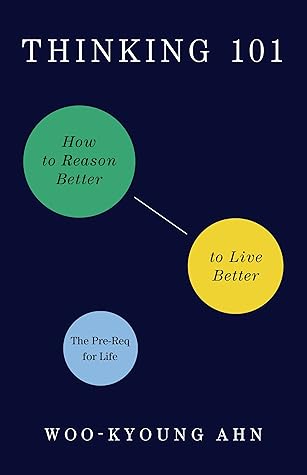More on this book
Kindle Notes & Highlights
Read between
January 2 - January 5, 2023
And as some readers might suspect, hypersensitivity to what others might be thinking also has its downsides.
Emotional theory of mind—understanding others’ feelings and having compassion toward them—can also be improved by carefully thinking through other people’s circumstances.
Vicariously putting oneself in another person’s situation can increase prosocial behaviors.
A subject is presented with a picture of a pair of eyes and asked to select the emotional label that best describes them. (Readers can easily find this test online and take it for free; a similar test is used to measure one’s emotional intelligence.)
We also know that actors and fiction writers are exceptionally good at taking other people’s perspectives, and they must have been taught and practiced to develop such skills.
One very plausible possibility is that the effect of reading novels is real, but it requires lots and lots of reading over many years. People in collectivist societies are better at guessing what others are experiencing because of a lifetime of immersion in the culture.
Of course, there is a limit to this phenomenon. If the choice is getting $340 now versus $340,000 six months from now, everybody can wait. And that must have been how I saw getting my Ph.D. I deemed the degree and the subsequent research job as way more valuable than any of the immediate rewards of having a social life or eating normally. I am sure everybody has had
the longer a child could wait for a second marshmallow when they were tiny children, the better they did on their SATs at the end of high school.
When a person enjoys one or two cocktails or glasses of wine with dinner every evening, it can require an enormous amount of willpower to break the habit.
Still, if kids and pigeons can distract themselves from immediate temptation, perhaps we grownups can do it too. Drinking a delicious nonalcoholic beverage is easier than staring cross-eyed at your dinner partner’s drink.
People were willing to pay extra so they could make their decision after the uncertainty was removed—even though they’d likely be making the same decision no matter what the outcome was.
Uncertainty about significant future outcomes can immobilize our decision-making.
This is fittingly called the certainty effect.
We would be talking about a 100 percent guarantee of not getting COVID-19 versus some chance of getting it. People might start paying more than $100 to get the Pfizer-BioNTech vaccine. That is the certainty effect.
One method that has been shown to work is to think about future events with as much specific detail as we can summon in order to make the future feel more real. And there are cool new tools that can help us do this.
This kind of technique has become pivotal in developing methods to help people reduce their use of tobacco and alcohol and cut their caloric intake.
Those who were thinking about their future selves took in about 800 calories on average, while those who did not consumed about 1,100.
At the same time, I’m also afraid that when it is taken to an extreme, a one-sided emphasis on self-control can backfire.
First, there is an epidemic of anxiety among adolescents and young adults. According to the National Institute of Mental Health, nearly one-third of adolescents have had an anxiety disorder at least once in their lifetime. Anxiety is not only prevalent, it is increasing: anxiety among eighteen- to twenty-five-year-olds increased from 8 percent in 2008 to 15 percent in 2018 (that is, even before the pandemic).
could personally feel that increase. Many brilliant students experience FOMO (fear of missing out)—and not in terms of fun things but crucial steps in their never-ending race for achievement. I was no different.
but when we get there, there’s always another mountain, and another one after that. Most of us live our whole lives either struggling to stay on solid ground or climbing mountain after mountain.
Actually, it may not take two hundred years for the absurdity of this overemphasis on work to be recognized.
The researchers found that those who showed better self-control at ages seventeen to nineteen showed lower rates of substance abuse and aggressive behavior by age twenty-two.
When their goal appears to be unreachable, they feel discouraged. As a result, they put in less effort and end up performing worse than they could have.
It is no small task to know when to persist and when to quit. To that end, I remind myself every day to enjoy the process of doing without jumping ahead to results.
If a goal is worth pursuing, even the pain that accompanies our practice feels good—just like the pain of good exercise, spicy hot pot, or icy cold tingling soda. But if you feel like you’re hurting yourself to achieve rewards and the only thing you enjoy is the final goal and not the process, it’s probably time to rethink—not just about your priorities but the way you think about them.


